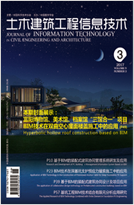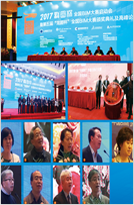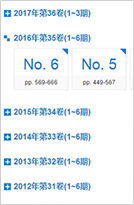2024, 16(6): 51-57. doi: 10.16670/j.cnki.cn11-5823/tu.2024.06.10
基于无标记增强现实的混凝土表观缺陷检测与管理方法
| 1. | 北京工业大学 智能建造与工程管理研究所,北京 100124 |
| 2. | 北京建工四建工程建设有限公司,北京 100075 |
Markerless Augmented Reality-Based Method for Detecting and Managing Concrete Surface Defects
| 1. | Beijing University of Technology, Beijing 100124, China |
| 2. | BCEG NO. 4 Construction Engineering Co., Ltd., Beijing 100075, China |
引用本文:
赵雪锋, 陈昊东, 付亮, 马云飞, 马嘉霖. 基于无标记增强现实的混凝土表观缺陷检测与管理方法[J]. 土木建筑工程信息技术,
2024, 16(6): 51-57.
doi: 10.16670/j.cnki.cn11-5823/tu.2024.06.10

Citation:
Xuefeng Zhao, Haodong Chen, Liang Fu, Yunfei Ma, Jialin Ma. Markerless Augmented Reality-Based Method for Detecting and Managing Concrete Surface Defects[J]. Journal of Information Technologyin Civil Engineering and Architecture,
2024, 16(6): 51-57.
doi: 10.16670/j.cnki.cn11-5823/tu.2024.06.10

摘要:混凝土质量直接影响到建筑物的结构安全和使用寿命。传统的混凝土质量管理主要依赖于人工视觉检测,效率低下、主观性强且易出错,无法满足大规模工程项目对质量问题管理的要求。此外,混凝土质量问题的实时监测和快速响应也是一个难题,传统的管理方法无法及时发现问题并采取有效措施进行修复。本研究通过将深度学习的分类结果作为增强现实(AR)触发条件,将混凝土缺陷特征模型、缺陷详细信息和解决方案在AR的虚拟视图中清晰展示,增强了现场工作人员对混凝土缺陷的理解和修复效率。同时将识别到的混凝土缺陷与具体的混凝土ID关联起来,自动生成和更新缺陷记录,进一步提升了质量管理的自动化和信息化水平,为后续的质量追踪和分析提供了便利。
Abstract: The quality of concrete directly impacts the structural safety and service life of buildings. Traditional concrete quality management methods, which rely heavily on manual visual inspection, are inefficient, subjective, and prone to errors, failing to meet the demands of managing quality issues in large-scale engineering projects. Additionally, real-time monitoring and rapid response to concrete quality issues present significant challenges, as traditional management methods often fail to timely detect problems and implement effective remedial actions. This study enhances onsite workers' understanding and repairs efficiency of concrete defects by utilizing the classification results of deep learning as triggers for augmented reality (AR), clearly displaying concrete defect feature models, detailed defect information, and solutions within an AR virtual view. Furthermore, the identified concrete defects are associated with the specific concrete ID, and the defect records are automatically generated and updated, which further improves the automation and information level of quality management, and facilitates the follow-up quality tracking and analysis.
| [1] |
丁威, 马亥波, 舒江鹏, 等. 基于残差网络的混凝土结构病害分类识别研究[J]. 建筑科学与工程学报, 2022, 39(04): 127-136. |
| [2] |
李若星. 基于机器视觉的混凝土裂缝检测方法研究[D]. 重庆: 重庆大学, 2019. |
| [3] |
乔文庭. 基于深度学习的混凝土桥梁裂缝检测分析研究[D]. 西安: 长安大学, 2021. |
| [4] |
姜韶华, 蒋希晗. 基于计算机视觉的混凝土缺陷检测研究综述[J]. 土木建筑工程信息技术, 2023, 15(4): 14-21.doi: 10.16670/j.cnki.cn11-5823/tu.2023.04.03 |
| [5] |
Wang X, Love P E D, Kim M J, et al. A conceptual framework for integrating building information modeling with augmented reality[J]. Automation in Construction, 2013, 34: 37-44.doi: 10.1016/j.autcon.2012.10.012 |
| [6] |
何波, 张慎, 邱文航, 等. 增强现实技术在工程施工中的应用综述[J]. 土木工程与管理学报, 2020, 37(02): 93-98. |
| [7] |
FENG C W, CHEN C W. Using BIM and MR to improve the process of job site construction and inspection[J]. WIT Transactions on the Built Environment, 2019, 192: 21–32. |
| [8] |
Kwon O S, Park C S, Lim C R. A defect management system for reinforced concrete work utilizing BIM, image-matching and augmented reality[J]. Automation in construction, 2014, 46: 74–81.doi: 10.1016/j.autcon.2014.05.005 |
| [9] |
Ghasemi Y, Jeong H, Choi S H, et al. Deep learning-based object detection in augmented reality: A systematic review[J]. Computers in Industry, 2022, 139: 103661.doi: 10.1016/j.compind.2022.103661 |
| [10] |
韩晓健, 赵志成. 基于计算机视觉技术的结构表面裂缝检测方法研究[J]. 建筑结构学报, 2018, 39(S1): 418-427. |
| [11] |
Zhang L, Yang F, Zhang Y D, et al. Road crack detection using deep convolutional neural network[C]//2016 IEEE international conference on image processing (ICIP). IEEE, 2016: 3708-3712. |
| [12] |
阮小丽, 王波, 吴巨峰, 等. 基于深度学习的钢筋混凝土桥梁掉块露筋病害识别[J]. 世界桥梁, 2020, 48(06): 88-92. |
| [13] |
Cha Y J, Choi W, Suh G, et al. Autonomous structural visual inspection using region‐ based deep learning for detecting multiple damage types[J]. Computer‐ Aided Civil and Infrastructure Engineering, 2018, 33(9): 731-747.doi: 10.1111/mice.12334 |
| [14] |
温作林. 基于深度学习的混凝土裂缝识别[D]. 杭州: 浙江大学, 2019. |
| [15] |
Dorafshan S, Thomas R J, Maguire M. SDNET2018: An annotated image dataset for non-contact concrete crack detection using deep convolutional neural networks[J]. Data in Brief, 2018, 21: 1664-1668.doi: 10.1016/j.dib.2018.11.015 |
| [16] |
洪景山, 祝颖丹, 宋康康, 等. 基于深度学习的工业缺陷检测研究进展[J/OL]. 计算机科学: 1-18[2024-03-04]. |
| [17] |
王文鹏, 秦寅畅, 师文轩. 工业缺陷检测无监督深度学习方法综述[J/OL]. 计算机应用, 1-16[2024-09-23]. |
| [18] |
He K, Zhang X, Ren S, et al. Deep residual learning for image recognition[C]//Proceedings of the IEEE conference on computer vision and pattern recognition, 2016: 770-778. |
| [19] |
梁栋, 李英俊, 张少杰. 融合改进ResNet-14和RSUnet模型的混凝土桥梁裂缝识别[J]. 北京交通大学学报, 2023, 47(03): 10-18. |
| [20] |
徐国整, 廖晨聪, 陈锦剑, 等. 基于HU-ResNet的混凝土表观裂缝信息提取[J]. 计算机工程, 2020, 46(11): 279-285. |
计量
- PDF下载量(5)
- 文章访问量(410)
- HTML全文浏览量(213)















